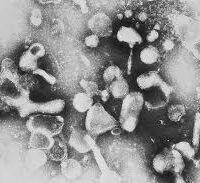Feline leukemia virus (FeLV) is second only to trauma as the leading cause of death in cats, killing 85% of persistently infected felines within three years of diagnosis. The virus commonly causes anemia or lymphoma, but because it suppresses the immune system, it can also predispose cats to deadly infections.
Transmission:
Cats persistently infected with FeLV serve as sources of infection for other cats. The virus is shed in saliva, nasal secretions, urine, feces, and milk of infected cats. Cat-to-cat transfer of the virus may occur from a bite wound, during mutual grooming, and through the shared use of litter boxes and feeding dishes. Transmission can also take place from an infected mother cat to her kittens during nursing or before birth. FeLV does not survive long outside a cat’s body, not longer than a few hours under normal household conditions.
Symptoms:
FeLV adversely affects a cat’s body in many ways. It is the most common cause of cancer in cats, may cause various blood disorders, and may lead to a state of immune deficiency that hinders a cat’s ability to protect itself against other infections. Symptoms include:
- Loss of appetite
- Progressive weight loss
- Poor coat condition
- Enlarged lymph nodes
- Persistent fever
- Pale gums and other mucus membranes
- Inflammation of the mouth and gums
- Infections of the skin, urinary bladder, and upper respiratory tract
- Persistent diarrhea
- Seizures
- Reproductive failures or fertility issues


